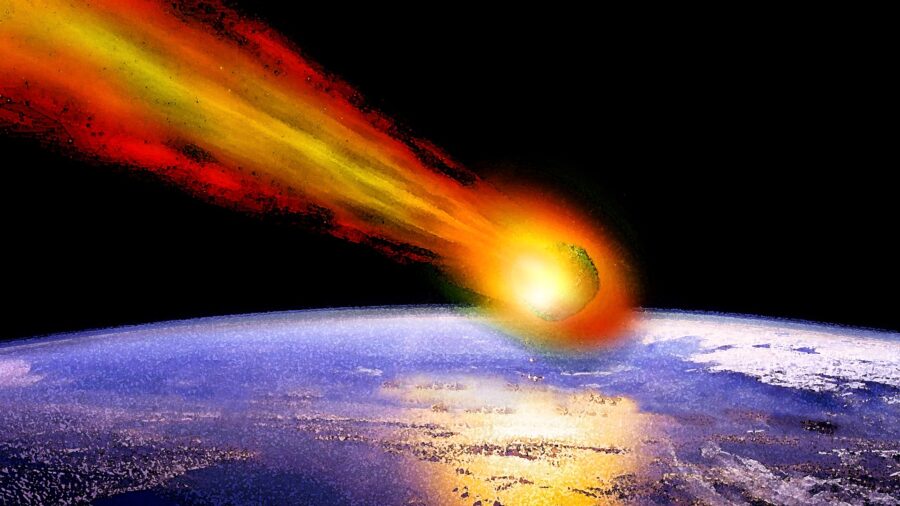The Government Admits An Interstellar Object Exploded Above Earth
Newly-declassified documents have revealed a deep space object exploded just above us a few years ago, but there's more that it doesn't say.
This article is more than 2 years old

While Americans are spending their day obsessing about celebrity gossip and rising prices, our government just casually mentioned that we were hit by an interstellar object in 2014. In true X-Files-like fashion, however, the world seems to have responded with a collective “meh.” If this doesn’t freak out your inner Fox Mulder, then trust me, it should. Several details about the incident should have you asking questions.

According to a report from the website Live Science, newly-declassified government documents reveal more details of the 2014 incident. The interstellar object was first observed by eyewitnesses as an exploding fireball that flew over Papua, New Guinea, and subsequently crashed into the ocean. A declassified memo by the U.S. Space Command (USSC) reveals the object was a small meteorite that entered Earth’s atmosphere on January 8, 2014. It subsequently broke up and the pieces are believed to be on the ocean floor.
Although the meteorite was small by the time it entered our atmosphere – only about a foot and a half across – it hit the earth at an unusually high rate of speed. The object was moving at 130,000 miles an hour when it hit the Earth. To put it in context, that’s almost 170 times the speed of sound, according to our calculations. A 2019 analysis and report of the strike of the interstellar object found that because it was moving so fast, and based upon the trajectory of the meteorite’s path, it is unlikely that it came from within our solar system. The report states that there’s a 99% probability that it came “from the deep interior of a planetary system or a star in the thick disk of the Milky Way galaxy,” according to scientists. It would also make the meteorite the first such object from deep space to have confirmed to hit earth.
That means that the interstellar object came from deep space, from a place of unknown origin, and it still managed to hit earth. The odds of that happening are infinitesimally small. Even the most skeptical observer would find that hard to believe, and if it gets your spidey-sense going, you wouldn’t be alone. Sci-fi fans might be reminded of Robert A. Heinlein’s classic 1959 book Starship Troopers, which was made into a cult-classic film in 1997. In both the book and film, a bug-like alien race attacks earth by launching meteors at it from deep space.
Here’s where the report takes a weird turn. A thorough analysis of the strike could not be completed, because some of the information surrounding the meteor strike is still classified by the U.S. government, according to the news site Vice. That means it couldn’t be reviewed by other scientists or published in any scientific journal. The government won’t say exactly what about this interstellar object warrants that it remains classified, but at least they are admitting the incident did happen and have confirmed some details.
Scientists with the U.S. Space Command confirmed in an April 7 tweet that the interstellar object was indeed from deep space. They called it a “confirmation that assisted the broader astronomical community.” They also confirmed that it is the first documented object to hit Earth that originated from outside our solar system.
The scientist who wrote the original 2019 report on the incident, Amir Siraj, is a theoretical astrophysicist at Harvard University. He hopes scientists will now take a second look at the strike, and possibly even mount an expedition to look for fragments, even if they are on the South Pacific Ocean floor. “The possibility of getting the first piece of interstellar material is exciting enough to check this very thoroughly and talk to all the world experts on ocean expeditions to recover meteorites,” Siraj told Vice. Apparently, Siraj hasn’t seen any of the film versions of The Thing, where a group of scientists track down an interstellar object in Antarctica and discover a killer alien life form is lurking inside.












